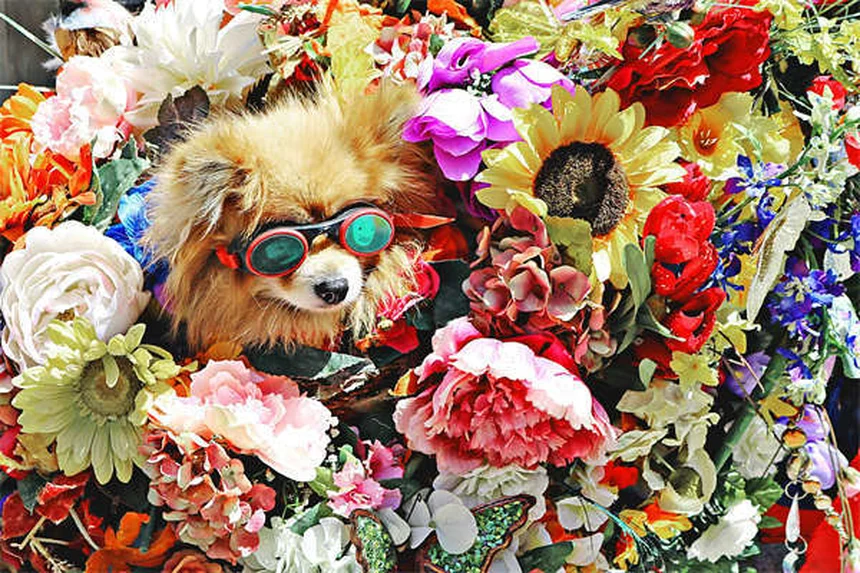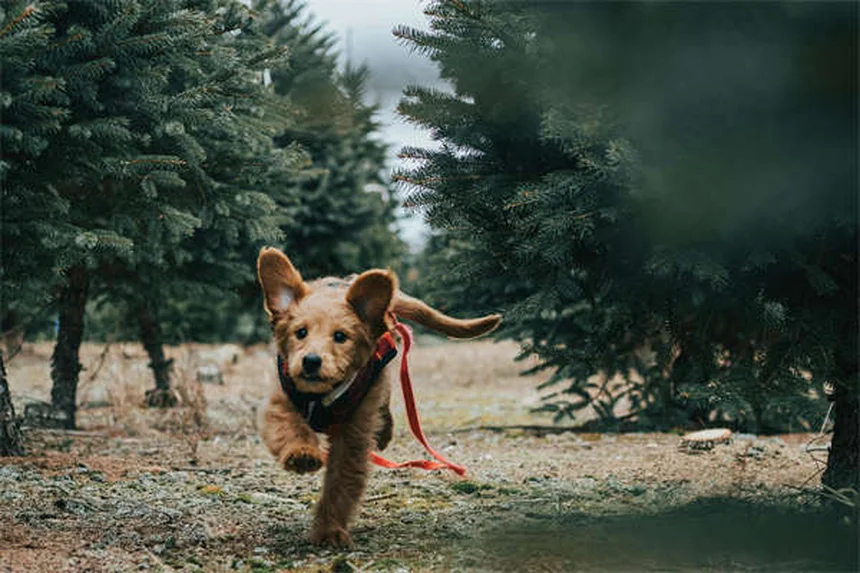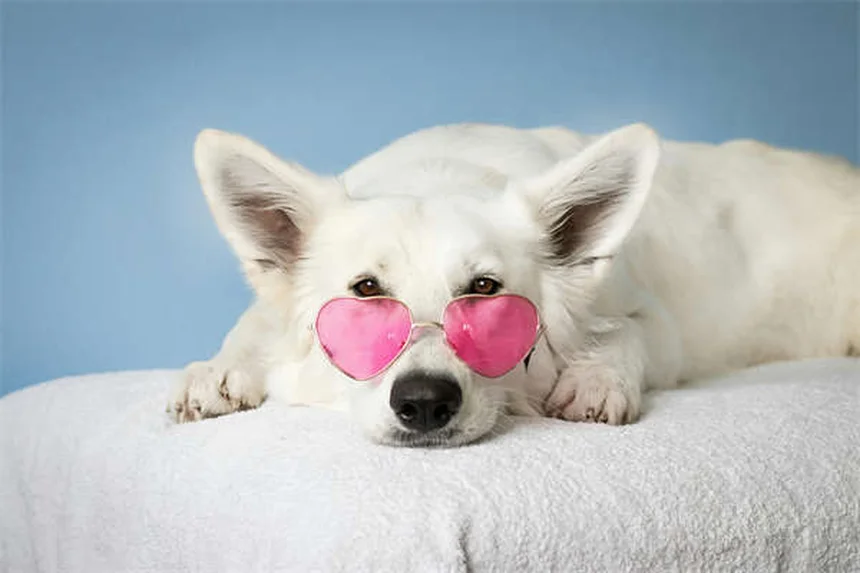Dog Body Language: 5 Signs You're Misreading Your Pup
Can you really understand what your dog is saying with their body? The answer is: Absolutely! Dogs communicate constantly through their ears, eyes, tail, and posture - but most owners miss these crucial signals. I've worked with dogs for years, and let me tell you, that wagging tail doesn't always mean what you think!When we misunderstand our dogs' body language, we risk creating stressful situations or even dangerous misunderstandings. That's why I'm breaking down exactly how to read your dog's signals like a pro. Whether your pup is relaxed, playful, or stressed, their body tells the whole story - you just need to know what to look for.In this guide, we'll cover everything from happy wiggles to stress yawns, so you'll never second-guess your dog's emotions again. Trust me, once you learn this language, you'll wonder how you ever lived without it!
E.g. :Puppy Training 101: 5 Essential Steps for a Well-Behaved Dog
- 1、Why Understanding Your Dog's Body Language Matters
- 2、Happy Dog? Here's How to Tell
- 3、When Your Dog is Saying "I'm Stressed!"
- 4、Fearful Dogs vs. Aggressive Dogs - Know the Difference
- 5、Putting It All Together
- 6、The Science Behind Canine Communication
- 7、Beyond Body Language - Other Ways Dogs Communicate
- 8、Common Mistakes Even Experienced Owners Make
- 9、How Understanding Dog Language Can Solve Behavior Problems
- 10、Taking Your Dog Understanding to the Next Level
- 11、FAQs
Why Understanding Your Dog's Body Language Matters
You're Probably Misreading Your Dog Right Now
Let me guess - you think a wagging tail always means happiness? Think again! Dogs communicate through their entire body, and missing these signals can lead to serious misunderstandings. I've seen too many people get bitten because they didn't recognize their dog's stress signals.
Here's the truth: Your dog is talking to you 24/7 through their ears, eyes, mouth, tail, and overall posture. When you learn this language, you'll transform your relationship. Suddenly, you'll know exactly when your pup needs space, wants to play, or feels nervous about that new visitor.
The Body Language Basics Every Owner Should Know
Dogs don't have words, but their bodies speak volumes. Watch for these key areas:
| Body Part | Relaxed Signal | Stressed Signal |
|---|---|---|
| Ears | Natural position | Pinned back |
| Eyes | Soft, relaxed | Whale eye (showing whites) |
| Tail | Loose wag | Tight wag or tucked |
Happy Dog? Here's How to Tell
 Photos provided by pixabay
Photos provided by pixabay
The Relaxed Dog Checklist
When your pup is truly comfortable, you'll notice:
- A wiggly, loose body that moves with ease
- Ears in their natural position (perky ears stand, floppy ears drape)
- Soft eyes without wrinkles on the forehead
My golden retriever Charlie does this adorable thing when he's relaxed - his whole body becomes like jelly, and his tail does this big, sweeping motion that knocks over anything in its path. That's textbook happy dog body language!
Playful vs. Relaxed - Spot the Difference
Did you know there's actually a difference between relaxed and playful body language? When dogs play, they often:
- Hold their tail slightly higher
- Make exaggerated, bouncy movements
- Do the classic "play bow" (front down, butt in the air!)
When Your Dog is Saying "I'm Stressed!"
The Hidden Signs of Dog Anxiety
Here's something most owners miss - dogs show stress in subtle ways. Ever notice your dog:
- Licking their lips when no food is around?
- Yawning when they're not tired?
- Suddenly sniffing the ground intensely?
These are all calming signals - your dog's way of saying "I'm uncomfortable!" I once saw a tiny chihuahua at the vet who was doing all these signals while his owner kept petting him. The poor pup was clearly saying "I need space," but the owner didn't understand.
 Photos provided by pixabay
Photos provided by pixabay
The Relaxed Dog Checklist
When dogs get really stressed, their whole body tenses up. Watch for:
- Stiff, frozen posture
- Tail tucked tightly
- Whale eye (showing the whites of their eyes)
- Pacing or trying to escape
Fearful Dogs vs. Aggressive Dogs - Know the Difference
The Fearful Pup Body Language
Fearful dogs try to make themselves small. You'll see:
- Curved back with head low
- Ears pinned back
- Possible appeasement grin (shows front teeth)
Fun fact: That "grin" isn't happiness - it's actually a nervous signal! My neighbor's rescue dog does this whenever new people approach too quickly.
Aggressive Posturing Explained
Now here's where it gets serious. Aggressive body language includes:
- Hard, fixed stare
- Raised hackles (fur standing up)
- Weight shifted forward
- Possible growling or snarling
But here's the million dollar question: Is that aggressive dog actually fearful? Many "aggressive" dogs are actually terrified and acting defensively. That's why reading the whole body matters so much!
Putting It All Together
 Photos provided by pixabay
Photos provided by pixabay
The Relaxed Dog Checklist
Let me give you a scenario: You're at the dog park and see a German Shepherd standing stiffly, tail high, staring at a smaller dog. What's happening?
If you said "aggression," you might be right - but check the ears! If they're pinned back, this might actually be a fearful dog putting on a brave face. Context is everything!
Your Dog Language Homework
This week, try this simple exercise:
- Spend 10 minutes just observing your dog
- Note their ear position in different situations
- Watch how their tail moves when relaxed vs. excited
You'll be amazed what you discover! Just last week, I realized my dog's "excited" tail wag is actually slightly different from his "nervous" wag. The more you practice, the better you'll understand your furry friend.
Remember - dogs don't speak English, but they're excellent communicators. All we need to do is learn their language!
The Science Behind Canine Communication
How Dogs Developed Their Body Language
Ever wonder why dogs communicate the way they do? Their body language evolved from wolves, but with some fascinating twists. While wolves use subtle signals to maintain pack hierarchy, domestic dogs developed more expressive faces - especially those adorable puppy-dog eyes!
Researchers at Duke University found that dogs actually have a special muscle around their eyes that wolves lack. This lets them make those irresistible "please love me" expressions that melt our hearts. Your dog isn't just being cute - they're literally evolved to communicate with humans!
The Surprising Role of Tail Communication
Here's something you probably didn't know - dogs wag their tails differently depending on which side of their brain is active. A study in Current Biology showed:
| Tail Wag Direction | Emotional State | Brain Hemisphere |
|---|---|---|
| Right-sided wag | Positive emotions | Left brain |
| Left-sided wag | Negative emotions | Right brain |
Next time your dog greets you, check which way their tail swings! I started noticing my lab wags more to the right when I grab his leash for walkies.
Beyond Body Language - Other Ways Dogs Communicate
The Secret Language of Dog Sounds
While we focus on body signals, dogs have a whole vocal repertoire. That whine when you're making dinner? It's not just about food - dogs actually developed special vocal cords to communicate with humans!
Fun experiment: Try recording your dog's different barks and play them back. You'll notice distinct sounds for "stranger at the door" versus "I want to play." My neighbor's beagle has at least five different barks I can identify!
Scent Marking - The Original Doggy Text Message
When your dog sniffs every fire hydrant on your walk, they're actually reading the neighborhood news! Dogs leave chemical messages in their urine that tell other dogs:
- Who they are
- How they're feeling
- When they passed by
Ever notice how dogs get extra sniffy after a stressful event? That's because stress changes their scent markers. It's like leaving an emotional status update for other pups!
Common Mistakes Even Experienced Owners Make
The Hug Misunderstanding
Here's a shocker - most dogs actually hate being hugged! While we see it as affection, dogs interpret it as restraint. Watch your dog next time you hug them - do they lick their lips, yawn, or look away? Those are all stress signals!
But wait - doesn't my dog love cuddles? Some dogs tolerate hugs from trusted humans, but it's not natural dog behavior. I learned this the hard way when I tried to hug a friend's new rescue dog - let's just say I got the message loud and clear!
The "Guilty Look" Myth
That "guilty" face when your dog chews your shoe? It's not guilt - it's fear of your reaction! Dogs don't understand right and wrong like we do. They're responding to your body language and tone.
Studies show dogs make that face even when they didn't do anything wrong. So next time you see those puppy eyes, remember - they're not saying sorry, they're saying "please don't be mad!"
How Understanding Dog Language Can Solve Behavior Problems
Preventing Reactivity on Walks
Ever wonder why some dogs bark at others? Often, it's because they feel trapped by the leash. If you learn to read early stress signals, you can:
- Change direction before they react
- Use treats to create positive associations
- Give them more space to feel safe
I helped my cousin's anxious terrier this way. Once we recognized his "I'm uncomfortable" signals (freezing, whale eye), we could intervene before he barked. Now walks are peaceful!
Making Vet Visits Less Stressful
Why do dogs hate the vet? It's not just the shots - it's all the unfamiliar smells and restrained handling. But if you know dog language, you can:
- Watch for subtle stress signs
- Ask the vet to go slower
- Bring high-value treats to create positive associations
My vet now lets me feed Charlie peanut butter during exams. He still doesn't love it, but at least he's not trembling anymore!
Taking Your Dog Understanding to the Next Level
Advanced Body Language to Watch For
Ready to become a dog whisperer? Look for these subtle signs:
- Piloerection (raised hackles) - could mean excitement or stress
- Paw lifting - often a sign of uncertainty
- Head tilting - they're trying to understand you better
Last week I saw a dog at the park lift one paw while approaching another dog. The owner thought it was cute, but I recognized it as hesitation. Sure enough, moments later the dog turned away - he was saying "I'm not sure about this!"
How Dogs Read Human Body Language
Here's the amazing part - dogs study us just as closely! They can:
- Follow our eye gaze to find hidden treats
- Distinguish between happy and angry facial expressions
- Even sense when we're about to leave based on our routines
Isn't it wild how your dog knows you're going for a walk before you even touch the leash? They're masters at reading our subtle movements and habits. Makes you wonder - who's training whom here?
E.g. :Understanding Dog Body Language: Decipher Dogs' Signs & Signals
FAQs
Q: What does it mean when my dog licks their lips but there's no food around?
A: Great question! When dogs lick their lips without food present, it's actually one of their calming signals - a way to say "I'm feeling stressed." I see this all the time at the vet's office or during thunderstorms. Other subtle stress signs include yawning when not tired or suddenly sniffing the ground. These behaviors are your dog's way of coping with discomfort. If you notice these signals, it's best to remove your pup from the stressful situation or give them some space to relax.
Q: How can I tell if my dog is truly happy versus just excited?
A: This is a super common confusion! A happy, relaxed dog will have loose, wiggly movements with a sweeping tail wag at spine level. Their ears will be in a natural position and their eyes soft. An excited dog, on the other hand, often holds their tail higher, makes bouncier movements, and might do the classic "play bow" (front down, butt up!). The key difference? Relaxed dogs move fluidly, while excited dogs have more tense, exaggerated motions.
Q: Why does my dog show his teeth sometimes when he's not growling?
A: What you're describing is called an appeasement grin - and it's totally different from aggression! When dogs pull back their lips to show just their front teeth (without snarling), it's actually a nervous signal meaning "I'm no threat." My neighbor's rescue dog does this whenever new people approach too quickly. It's crucial not to mistake this for aggression - look at the whole body. An appeasement grin comes with other submissive signals like lowered body posture and averted eyes.
Q: Are raised hackles always a sign of aggression?
A: Not necessarily! While raised fur (piloerection) often accompanies aggression, it can also happen when dogs are extremely excited or startled. The real tell is in the rest of their body language. An aggressive dog will have stiff posture, intense staring, and weight shifted forward. An excited or surprised dog might have raised hackles but otherwise loose, wiggly movements. Always look at the whole picture before interpreting this signal.
Q: How can I practice reading my dog's body language better?
A: Here's my favorite beginner exercise: spend just 10 minutes daily observing your dog in different situations. Notice how their ears position when relaxed versus alert. Watch how their tail moves during play versus when meeting new people. I did this with my golden retriever and discovered his "happy" wag is wide and loose, while his "nervous" wag is tight and high. The more you practice, the more fluent you'll become in your dog's unique communication style!







